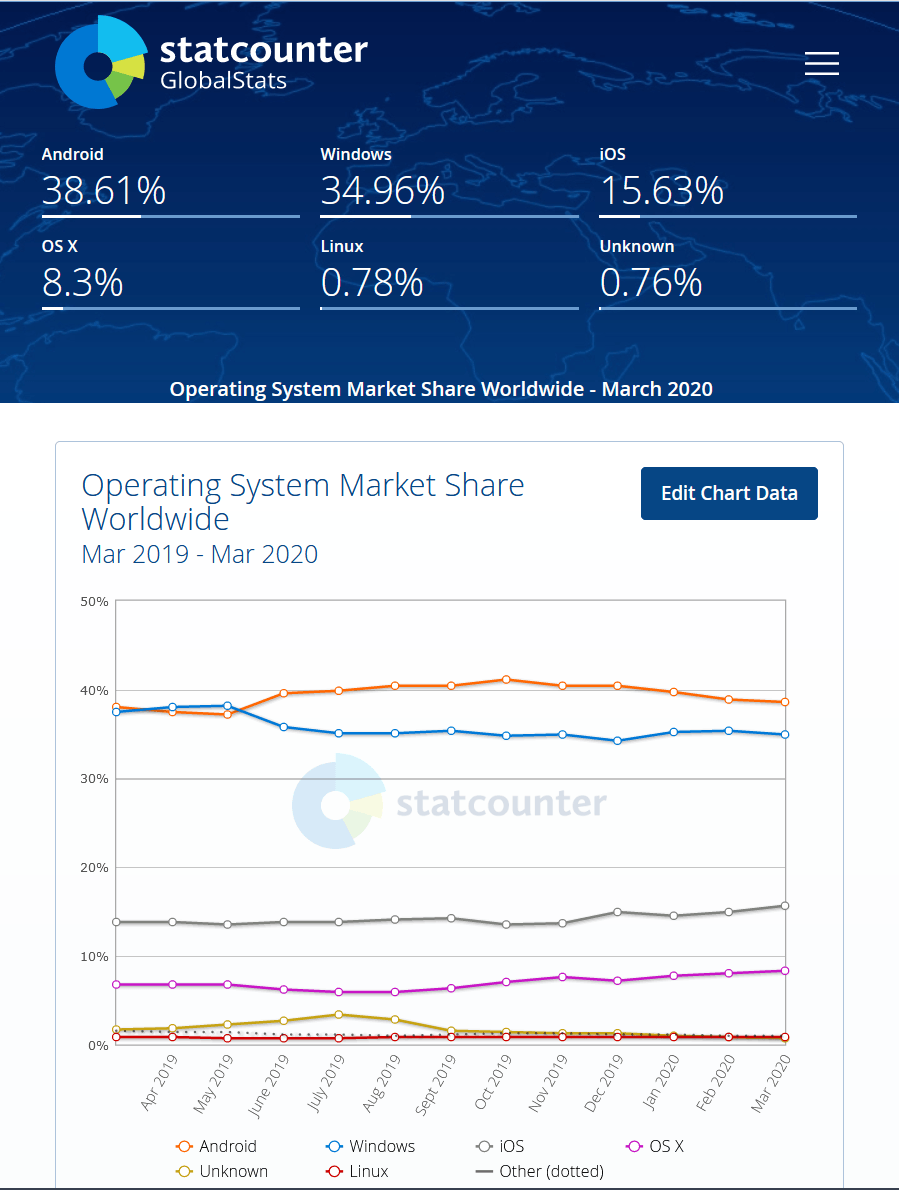

Writing and publishing blog posts or articles on your own website is critical to generate qualified traffic.
Publishing informational content on a website blog, resource section, or
Content is everywhere today. It’s insanely competitive.
Did you know that over 70 million blog posts are published monthly?
If you’re going to gain any real traction, you need to look beyond publishing content on your website.
In addition to mainstream outlets like Medium, sharing your content on industry or niche platforms can also help it get seen by more people.
Think of sharing your content on other outlets like a megaphone: the more places you promote it, the wider the message will spread.
Ready to amplify your content and grow your website traffic and conversions?
Here are 20 places you should be sharing your content, from the mainstream to the niche.
1. Medium
Medium allows you to republish your existing blog posts (if you use their import feature, they even add a rel=canonical link), but you can also use this platform as a way to increase traffic to the full blog posts on your site.
If you don’t want to syndicate the entire text of your blog posts, this might be a tactic to try.
If you’re getting good traction on Medium, you could mix it up by adding occasional exclusive Medium articles once you’ve built up your readership.
2. Reddit
Reddit can be a worthwhile platform to consider for sharing content, but it needs to be done the right way.
Redditors are very conscious of brands attempting to “spam” subreddits with their own content, so this is usually best left to a few employees with active Reddit accounts who may occasionally share company blog posts once or twice a month.
These articles should be carefully chosen and provide real value to the users. It’s also possible for Redditors to view other users’ activity, so make sure that employees are using their Reddit accounts for more than just posting company blog posts.
Otherwise, they’ll be pretty easily found out and your company may get called out, which is never good on such an active platform.
3. LinkedIn Articles
Like Medium, LinkedIn allows you to syndicate blog posts on your personal LinkedIn profile as LinkedIn articles.
Although these articles currently don’t automatically add rel=canonical links, research has shown that Google isn’t flagging these as duplicate content (even though they show up on duplicate content search sites like Copyscape).
Because of their existing network on LinkedIn, many users have built up a strong subscriber base for their articles on the platform.
Users can choose to subscribe to users’ posts, meaning they will get a notification every time that user publishes something new.
This built-in alert system is a definite advantage over other platforms, especially since your blog readers don’t get alerts like that unless they subscribe to email notifications, which is a lot bigger commitment than checking a box to receive an in-platform notification on LinkedIn.
4. Email
Promoting your content through email is an “oldie but goodie” tactic that still pulls major weight.
In addition to being much more loyal to your brand, email subscribers are 3.9x more likely to share your content via social media than visitors from other sources.
Email clicks are also usually higher than the CTR on social media posts as well – Campaign Monitor found that you are 6x more likely to get a click from an email than from a sent tweet.
The way you share your content on social media highly depends on what works best for your schedule and your users. It’s worthwhile to experiment to see what gets the most clicks.
Some companies or writers prefer to send out a new email every time a new post is published (which is usually automated in some way using an RSS feed and a service like Zapier or IFTTT), while others wait until the end of the week or month to send a newsletter of updates and the latest published posts.
The platforms above are the most useful for driving traffic. However, there are plenty of other platforms to consider based on the topic and format of your content.
5. BizSugar
This online community is for business owners and marketers interested in discussing growth and growth hacking topics.
Bizsugar have online events, free groups, and resources for their users like goal setting templates.
6. Managewp
This is a slightly different format, but users can up- or down-vote content about WordPress.
7. Dzone
The Dzone discussion board has over 1 million developers who share content and links on coding, cloud computing, and more.
8. Twitter Brand Accounts
If your article makes sense for your brand, consider adding your article to your sharing list for your Twitter brand accounts.
You can even schedule the article to be posted several times over a few months.
9. Twitter Personal Accounts
Twitter moves fast, so it makes sense to share your article, along with a great quote, in a few places on Twitter.
It is in your best interest to spread the shares out a bit so you don’t overwhelm your audience.
10. Twitter Chats
For a more targeted audience, look for industry-related Twitter chats and use their hashtags when sharing really high-quality content.
Use it sparingly: don’t spam the chat hashtag with every piece of content you write.
But it’s fairly common to see popular marketing hashtags like #seochat and #twittersmarter active even when the regular Twitter chats aren’t going on.
11. Personal Page on Facebook
This one seems obvious, but it is a place many people forget.
If you are concerned about spamming your family or friends who aren’t in the industry, consider creating a Facebook list for work folks. This way you don’t have to worry about confusing your Great Aunt Gertrude with a step by step guide to PPC.
12. Brand Facebook Page
Another sort of obvious one, but it shouldn’t be overlooked.
Grab a good quote from your content, make sure your image displays correctly and send it out – assuming it is relevant to your audience.
13. Facebook Groups
Facebook groups are still alive and well! Because many users are already using Facebook in their personal time, they are usually more active in groups.
Join a few industry-related groups and share your best content once a month, while also contributing to the group when possible.
Be sure to stay active as a member of the chat or group by answering questions, reading others’ content, and contributing genuinely to the group.
14. SlideShare
Creating really good content takes time.
One way to get the most mileage out of your content is by taking highlights and turning it into a presentation for SlideShare.
Just changing the format you present your content in can help reach a wider audience.
15. Quora
Quora has been around forever and is known as the internet’s premier question and answer website.
Users post a question, and users answer that question. Pretty straight forward.
But when you consider that a business or a representative can research what kind of questions customers are asking, and have a detailed blog post ready to answer it, it becomes a great opportunity.
Knowing what your audience is having a problem with can help give you great ideas for content that will drive traffic to your site.
For example, if everyone is asking for information about how to hang a picture on a wall, and you sell the best picture hanging nails ever, why not flex some of your expertise on the matter?
You get to personally answer a potential customer’s question while providing a handy link to your blog’s detailed explanation of it.
16. Growth Hackers
Most businesses want to scale up to take on more work and overcome new obstacles.
Growth Hackers is an online community of user-generated content that provides insights on any topic that can be done to increase your company’s size, revenue, customer base, lead generation, etc.
Every article is detailed and insightful to many different niche industries. Make your voice heard while shining a light on the many ways you are trying to grow your business. It is well worth it.
17. Flipboard
Flipboard is a neat app that condenses the internet into nice digestible bite-size blocks. They share content from every major publication you can think of, and they target it to the people who are looking for it.
Creating an account and posting your content to it is a great way to drive traffic directly to your blog. It is also a great way to keep track of industry insights, and even your own social media feeds.
What really sets this apart is its simplistic interface, which is backed by some serious clout, algorithmically speaking.
18. Scoop.It
Boasting organic traffic over two million monthly users, Scoop. It has become a powerhouse platform for marketers.
Offering content curation software, they help marketers find authoritative content in their industry, which can then be easily shared on social media.
You can post your content in the hopes that others will also see it and share it with their followers.
Everyone wants to share their content with the world, and this tool makes it easy. It is also a great way to come up with new topic ideas based on what is trending.
19. Listly
Another great content curation tool out on the market is Listly. With a web application and an official iOS app, it makes creating lists of content simple.
Once you have your lists created, you can publish them to your audience.
As an added benefit, it even allows your audience to cast a vote on the items on your list, providing you with more insight on what your audience values at that moment.
20. Business2Community
This site is a leader for professionally driven content distribution – a community of thought leaders, marketers, writers, etc. all coming together to share their insights and news under one roof.
This is an excellent place for a new writer to get their feet wet with public content. It is also a great place for in-depth and expert opinions on very specific business topics.
[“source=searchenginejournal”]





